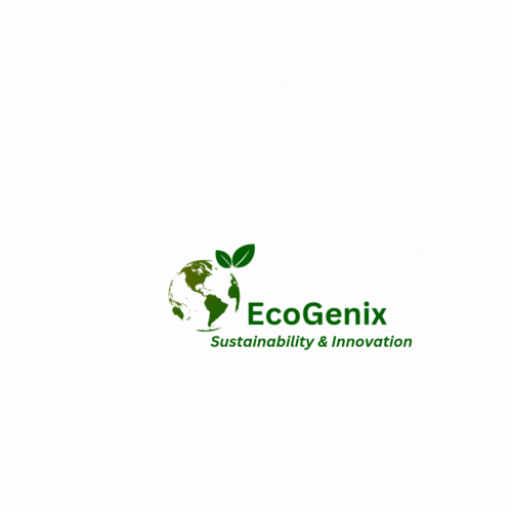Introduction:
Sustainable Development Goal (SDG) 12, “Responsible Consumption and Production,” is one of the 17 global goals adopted by the United Nations in 2015. This goal aims to ensure that we achieve sustainable patterns of consumption and production by promoting efficient resource use, reducing waste, and minimizing negative environmental and social impacts. SDG 12 is fundamental for the attainment of other SDGs as it addresses issues related to climate change, biodiversity loss, poverty eradication, and social inequality. This article will delve into what SDG 12 entails, how it can be achieved, its integration with other SDGs, its target beneficiaries, progress made so far, and potential solutions to its challenges.
What is SDG 12?
SDG 12 seeks to achieve sustainable consumption and production patterns worldwide. It entails promoting resource efficiency, reducing waste generation, and ensuring that the environmental and social impact of consumption and production activities remains within planetary boundaries. This goal emphasizes the importance of adopting more sustainable lifestyles, changing consumption patterns, and implementing responsible business practices throughout the value chain.
How can it be achieved?
Raising Awareness: To achieve SDG 12, increasing awareness among individuals, businesses, and governments is essential. Public campaigns and educational programs can inform people about the consequences of overconsumption and wasteful production methods.
Sustainable Production Practices: Businesses need to adopt sustainable production methods, such as eco-design, green manufacturing, and circular economy models. This includes responsible sourcing of raw materials, reducing energy and water usage, and minimizing waste generation.
Resource Efficiency: Encouraging resource efficiency across industries can help reduce the ecological footprint of production processes. This involves optimizing resource usage and adopting cleaner technologies.
Waste Management: Establishing effective waste management systems that prioritize recycling, reusing, and reducing waste is crucial. Waste-to-energy technologies can also play a role in converting waste into renewable energy.
Sustainable Consumption: Encouraging responsible consumer behavior is vital. This includes choosing eco-friendly products, reducing single-use plastic consumption, and supporting businesses that prioritize sustainability.
Integration with other SDGs:
SDG 12 is intricately linked to several other SDGs:
SDG 1: No Poverty – Responsible consumption and production can alleviate poverty by creating sustainable job opportunities and promoting inclusive economic growth.
SDG 2: Zero Hunger – Sustainable production methods can increase agricultural productivity while minimizing environmental degradation and supporting food security.
SDG 3: Good Health and Well-being – Reduced pollution and hazardous waste can positively impact public health.
SDG 7: Affordable and Clean Energy – Resource-efficient production and sustainable consumption contribute to reducing energy consumption and transitioning to clean energy sources.
SDG 13: Climate Action – Sustainable production helps in reducing greenhouse gas emissions, and mitigating climate change impacts.
SDG 15: Life on Land – Responsible consumption and production safeguard ecosystems and biodiversity.
Target Beneficiaries and Their Importance:
The target beneficiaries of SDG 12 include:
Consumers: Empowering consumers to make sustainable choices can drive demand for eco-friendly products and influence business practices.
Businesses: Adopting sustainable production practices not only reduces negative impacts but also attracts environmentally-conscious consumers and investors.
Governments: Policymakers play a crucial role in creating an enabling environment through regulations, incentives, and supporting sustainable initiatives.
Developing Nations: SDG 12 can aid developing nations in leapfrogging to sustainable technologies, avoiding the mistakes of industrialized countries.
Progress and Measures Implemented Worldwide:
Several countries have made significant strides in promoting responsible consumption and production:
Circular Economy Initiatives: Countries like the Netherlands, Finland, and Japan have implemented successful circular economy models that prioritize resource efficiency and waste reduction.
Sustainable Packaging: France, Germany, and South Korea have taken steps to ban single-use plastics and promote biodegradable and reusable packaging.
Green Energy Adoption: Denmark and Costa Rica have made significant progress in transitioning to renewable energy sources.
Sustainable Agriculture: Countries like Brazil and India have promoted sustainable agricultural practices to reduce deforestation and improve food security.
Benefits, Concerns, and Solutions:
Benefits:
Environmental Protection: Responsible consumption and production reduce pollution, conserve resources, and protect biodiversity.
Economic Growth: Sustainable practices can create new economic opportunities and green jobs.
Social Equity: Responsible production can improve labor conditions and empower local communities.
Concerns:
Initial Costs: Transitioning to sustainable practices may require upfront investments that could be a challenge for smaller businesses.
Consumer Behavior: Changing consumer behavior towards sustainability can be difficult due to ingrained habits and marketing influences.
Global Cooperation: Achieving SDG 12 requires international cooperation, and conflicting interests may hinder progress.
Solutions:
Policy Incentives: Governments can provide tax breaks and subsidies to businesses adopting sustainable practices.
Sustainable Finance: Financial institutions can direct investments towards sustainable projects and companies.
Education and Awareness: Raising awareness among the public can drive demand for sustainable products and practices.
Conclusion:
SDG 12, responsible consumption and production, is a vital component of achieving sustainable development worldwide. By adopting resource-efficient production practices and making responsible choices as consumers, we can protect the environment, promote economic growth, and ensure a better future for generations to come. Governments, businesses, and individuals must collaborate to overcome challenges and work towards a more sustainable and equitable world. The progress made so far demonstrates that with collective efforts, we can pave the way for a more sustainable future.
ARTICLE BY: WAYNE TOTA
Food Security and Climate Change
waynetota9@gmail.com
0601133196239
Visit for more articles:
https://sites.google.com/view/foodsecure-sustain-agriclimate/home.

Leave a Reply